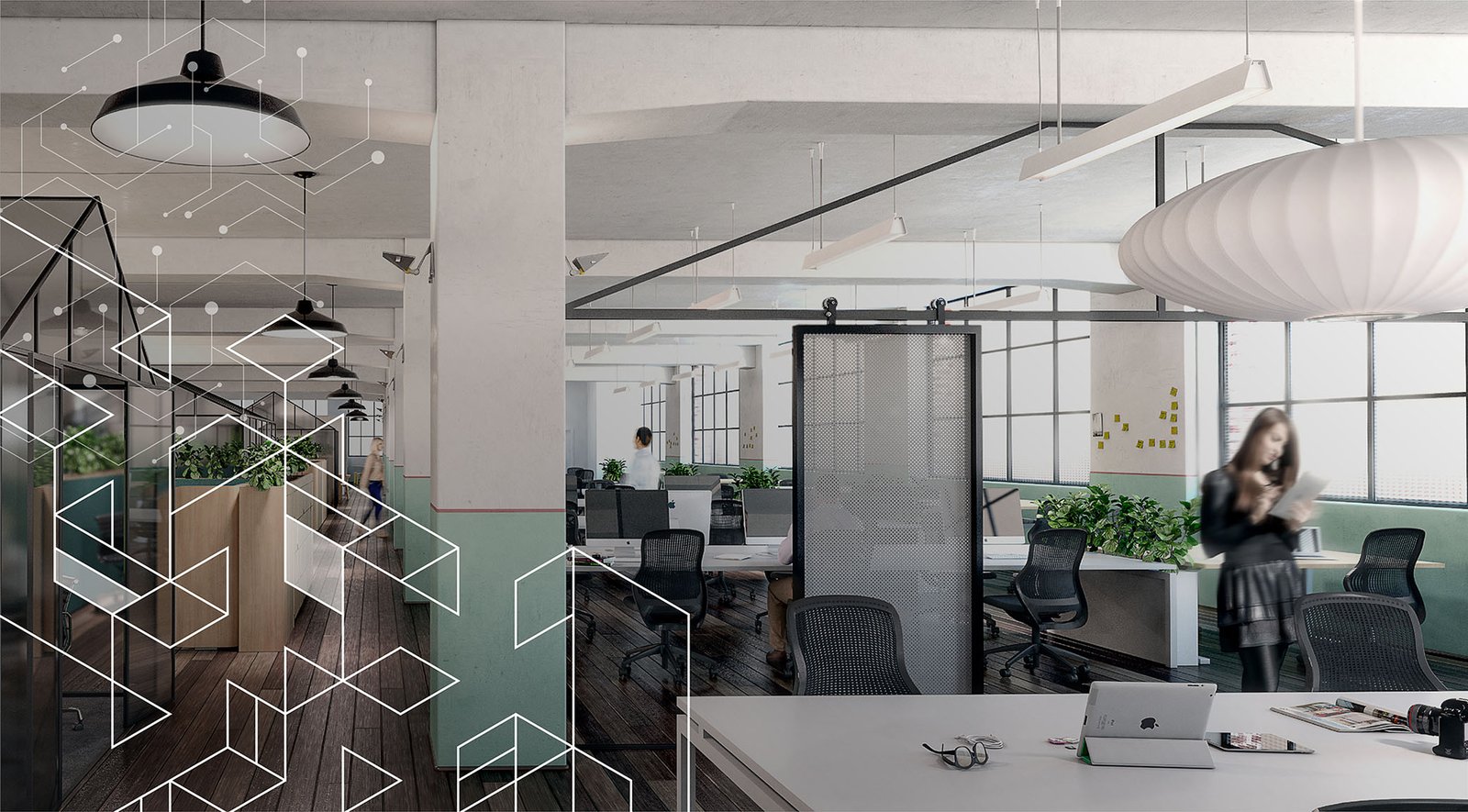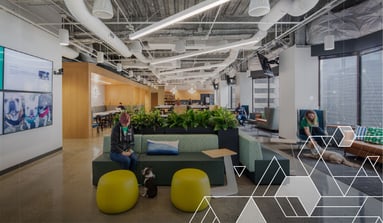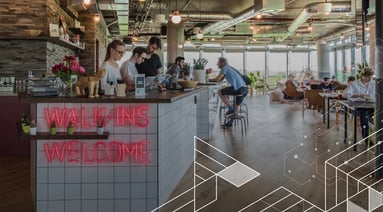TECHscape: Using office location to your advantage

In a landscape of continuous disruption, the tech industry has been at the forefront of redefining the concept of workplace. To help executives meet the pace of change, we developed TECHscape, a collection of research, thought leadership insights and data on trends driving future workplace decisions.
Tech and the city
The love affair with the city is changing. After years of focusing on increasing their corporate footprint in downtown areas of major cities, tech firms may be looking to smaller cities, suburbs, or new neighborhoods for their next mass workplace migration.
Keeping it moving
When Covid-19 hit the world in early 2020, companies around the world had to adjust to a nearly entirely remote workforce. With virtual communication platforms replacing what would have otherwise been in-person meetings and outings, every industry contemplated what the future of their offices looked like, and many still are.
Recently, Jack Dorsey, CEO of Twitter, said "employees can work from home forever." Meanwhile, Google and Facebook have embraced a long-term partial work from home strategy for 2021, empowering individuals that can perform their role remotely to do when it makes sense. Many other tech firms are expected to follow suit, and given that this trend is expected to last for the foreseeable future, tech companies will need to readjust their corporate office strategy from a holistic point of view.
A big part of office strategies appears to be shrinking the overall footprint in high-priced, large city downtown areas and refocusing smaller, urban workplaces into brand-centric recruitment opportunities and dynamic in-person meeting spaces.
Outside of the city centers, tech firms are starting to supplement their portfolio with office facilities in city outskirts, suburbs and mid-market cities. These markets offer less expensive facilities, plentiful space to enable social distancing, and attractive tax incentives. The partial pivot to the mid-cap markets has another major advantage: the tech industry’s most coveted talent appears to be making a similar move out of the big cities.
Austin: the new Silicon Valley?
Many large Silicon Valley-based tech firms are making big moves to Austin, Texas. Tesla and Oracle are among those who have shifted their office and manufacturing facilities to the Austin area. Apple is further cementing the "Silicon Valley" presence in Austin with their investment in a new headquarters building, to be complete by 2025. While the pandemic lit the match for this move to Austin, other drivers have been factoring heavily into this overall trend:
Tax incentives. The main ten tech companies that received a tax subsidy from the City of Austin have subsequently created or retained more than 4,000 local Austin jobs and invested at least $5.3 billion in the area. A 2010 study estimated that Samsung accounted for about $1.4 billion in annual economic activity, 6,500 total jobs and $296 million in annual worker earnings for the Austin area. Based on these past successes, it’s expected that Austin, and cities like it, will continue to offer competitive incentives to draw in tech firms.
Talent pool. Austin’s cost of living is significantly lower than Silicon Valley and large city downtown areas, making it more attractive to the tech sector’s most coveted talent base, young engineers in their 20s and 30s. In fact, 17.4% of the city's population is categorized as “millennial,” making Austin one of the youngest cities in the United States. Tech firms provide essential job opportunities to these emerging markets, organically elevating the experience level and technical talent of the local job market. These elements factor into shared success enjoyed by both the tech firms and the local marketplace, putting critical infrastructure funds back into the local economy and generally offsetting any strains on infrastructure or other potential pitfalls.
What does the future look like?
The partial tech exodus from downtown city centers to mid-cap cities (like Austin) and suburbs is expected to increase, but data-driven insight at the portfolio level is going to be critical to picking the right workplace locations.
At Unispace, we leverage tools like uniBIM to automate data-collection, empowering our team to future-gaze and provide our clients maximum portfolio insight and flexibility, picking the right market for them. This, in concert with our agile workplace models like Propeller and Playground, arm our clients with proactive insights and scalable space solutions regardless of market conditions, industry trends or disruptive events.
| Interested in reading the full book? Download the e-book here |


